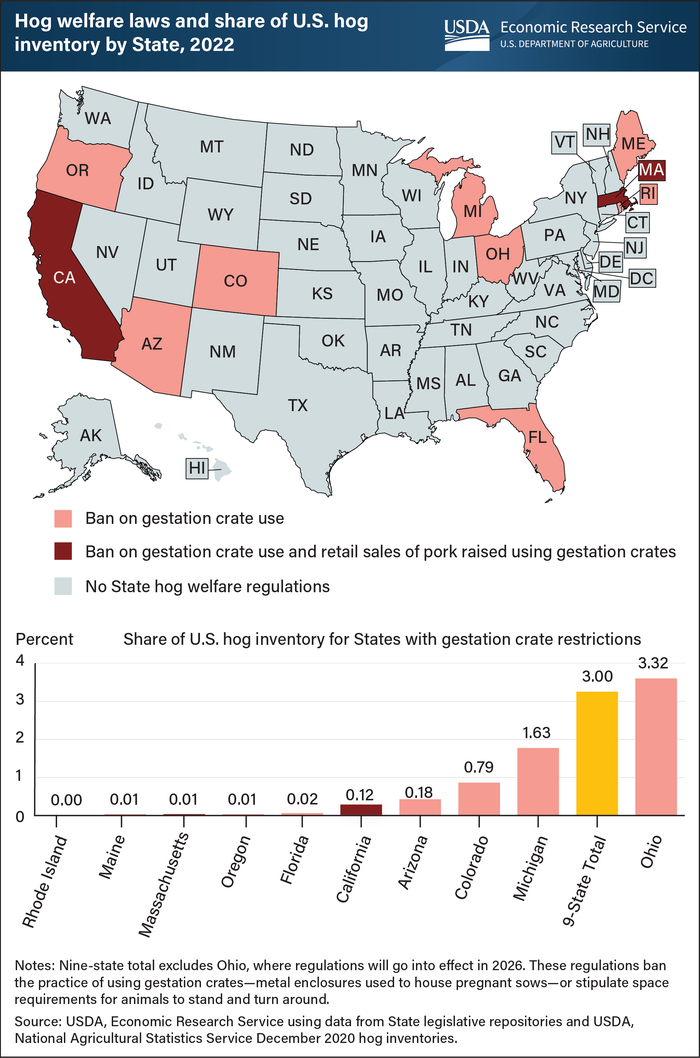Less than 0.2% of nation's pork is produced in the two states with retail sales bans while an estimated 14% of the U.S. population resides there.
March 17, 2022

Over the past two decades, multiple states have passed animal welfare regulations in hog production. These regulations ban the common practice of using gestation crates — metal enclosures used to house pregnant sows — or stipulate space requirements for animals to stand and turn around. In addition to restrictions during production, two of these states, California and Massachusetts, passed retail sales restrictions that prohibit the sale of pork originating from animals kept in gestation-crate systems or their direct offspring.
Hog welfare regulations are concentrated in states with relatively small pork industries. The proportion of the national herd covered by gestation crate bans is currently estimated at 3% based on expected production in 2022.

Except for Michigan, each state with existing bans on gestation crates has produced, on average, less than 1% of total U.S. pork production (in pounds) since 2018. Ohio will become the largest hog-producing state to ban gestation crates when its regulations go into effect in 2026.
Based on state hog inventories in December 2020, projected coverage of the total U.S. hog herd and the breeding herd is expected to remain below 10% of hogs and pigs under current state regulations through 2026.
Interstate pork trade and the concentration of pork production in states without similar regulations mean retail sales bans will likely have impacts beyond a state's own borders. A combined total of less than 0.2% of the national pork herd is produced in the two states with retail sales bans, while an estimated 14% of the U.S. population resides in those states.
In the past, similarly-structured retail sales bans have placed upward pressure on retail prices both in and out of states for hogs and other covered livestock products. These price impacts have arisen in response to production impacts.
One effect is the reduction of national livestock numbers in the relevant industry, reducing supply and subsequently increasing prices. Another factor is increased production costs for the portion of the industry bringing its operations into compliance.
Several legal challenges to retail sales bans on pork have been attempted to delay or halt the implementation, but thus far most have not prevailed. The major exception is the January 2021 suspension of California's 2018 law until six months after rules have been defined and finalized.
Coverage of the national pork industry by state gestation crate bans is low and is expected to remain low under current rules through 2026. However, state gestation crate regulations have been increasingly passed over the last 15 years, with more states proposing more recent similar legislation. To the extent that these regulations limit retail sales, industries in states without regulations may face increased pressure to alter gestation crate conventions.
Source: USDA Economic Research Service, which is solely responsible for the information provided, and wholly owns the information. Informa Business Media and all its subsidiaries are not responsible for any of the content contained in this information asset.
You May Also Like



